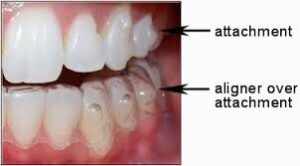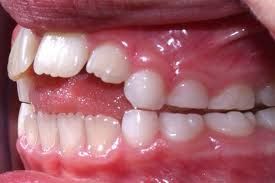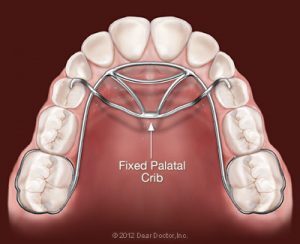January 1st, 2021
Patients will often ask me how orthodontists can move teeth. The process is really quite simple – we stimulate teeth to move by applying a constant, gentle pressure to the teeth. This force acting on the teeth stimulates the bone around the roots of the teeth to remodel. The remodeled bone allows the tooth to move to a new position within the jaw and voila! – your tooth is now straighter.

How the force is applied to the tooth is important in determining the direction and rate of movement. With Invisalign aligners, one of the challenges of moving teeth can be making the aligner apply the correct force to the tooth in the correct direction. Invisalign aligners do not grip teeth the same way braces do because the aligners are removable and slip on and off the teeth. Aligners are not bonded to the teeth like braces. While this is convenient, it also makes it challenging to apply the correct forces to the teeth for tooth movement. One of the ways we have created a work-around for the limitations of Invisalign is by bonding attachments to the teeth. Attachments are little tooth-colored bumps bonded to the teeth. The attachments give the aligner a “handle” to grip the tooth and move it more efficiently like conventional braces would. This allows Invisalign aligners to get closer to the quality and speed of treatment results you might achieve with conventional braces by allowing for a better grip on the teeth and therefore more difficult tooth movements.
If you are interested in improving your smile and self-confidence, please contact our office and we would be happy to discuss treatment options with you to find out what would be the best way for you to achieve a beautiful, attractive and confident smile.
Tags: braces, Invisalign, orthodontists, attachments, aligners, conventional braces
Posted in Uncategorized, Straight teeth, Orthodontist, Braces, Invisalign, Adult orthodontic treatment | No Comments
May 5th, 2020
What are my braces going to feel like? Are my braces going to hurt? What foods can I eat? These are some of the typical questions patients ask on the day of their appointment to get braces placed on their teeth. They are all very good questions and important to answer to help patients feel at ease about the changes they will experience while receiving orthodontic treatment.

Wearing braces has become a relatively straight forward process with minimal discomfort compared to twenty years ago. While this is true, you are still going to experience some changes that will take a little getting used to. Your mouth is an incredibly sensitive place – you can feel the thickness of a hair in your mouth immediately and braces are much thicker than a human hair. Just like a new pair of shoes, your new braces may initially rub and cause an irritation to your lips and cheeks until your mouth gets used to having braces. The first few days are an adjustment period, but after the first week your braces start to become a new part of your mouth and are pretty easy to manage.
Wearing braces does require some minor modifications to the foods you eat and the liquids you drink. The adhesive used to place braces is designed to be strong enough to withstand chewing, but not so strong that it damages your teeth when the braces are removed. This is the reason for the need to be a little bit careful about eating really hard or really sticky foods. For example, ice chewing should be avoided whether you have braces on or not. If you would like to eat an apple, it is better to cut it into slices instead of biting into the core. Similar modifications can be made for most foods. Excessive drinking of soda – diet or not- should be avoided.
Braces will cause some slight discomfort the first few days as your teeth begin to move into alignment. There is a cartilage ligament around the root of each tooth that allows the orthodontist to mold the teeth into a better position. This process of molding the bone around the roots of teeth causes a slight amount of inflammation and is the source of sore teeth when braces are placed or tightened. Over the counter medications such as ibuprofen (Motrin or Advil), acetaminophen (Tylenol) or naproxen (Alleve) are generally sufficient to make you comfortable while you go through the adjustment period with braces. Anti-inflammatory medications such as ibuprofen or naproxen will generally be more effective than acetaminophen for tooth pain.
If you have any additional questions about what to expect with braces, please feel free to call one of our offices at Budd Orthodontics to schedule a free consultation. The adjustment period that braces require is totally worth it for the beautiful new smile you will enjoy!
February 11th, 2020
Let’s be honest, seeing a one or two year old sucking their thumb is kind of cute. It makes you want to pick up the baby and give it a big hug and a kiss. However, thumbsucking is not limited to infants and toddlers.

As an orthodontist, I have had patients as old as 50+ who are thumb suckers. These patients relate to me that the thumbsucking is soothing and just helps them relax, especially when it is time to fall asleep. I have no problem with thumbsucking in regard to the social and emotional benefits it provides to some patients. We all have different ways of relaxing and easing the stresses of daily life. Who am I to judge?
The problem with thumbsucking from an orthodontic perspective lies in its effect on the movement of the teeth and the growth of the jaws. Prolonged thumbsucking over months and years will guarantee the need for braces and probably an expander in the future. The suction your mouth creates as you suck your thumb pushes your cheeks against your upper back teeth and splays your upper front teeth forward and your lower front teeth backward. The classic thumb sucker has a narrow palate with a crossbite on both sides and their front teeth stick out and don’t touch. The longer the thumbsucking goes on, the more exaggerated are the effects - especially once the permanent teeth start to grow in.

With my own children, I encourage the use of a pacifier to help the babies fall asleep and then when my kids have turned two, the “binky” fairy comes and takes away their binky to give it to another deserving child and leaves an exciting toy to replace it. They struggle for a few nights and then usually settle in without missing a beat. Thumbs are a lot harder to get rid of.

Treatments are available to help with the cessation of thumbsucking. I will usually recommend a product called Mavala (purchased on Amazon) as a first line of defense and then a habit appliance for patients who continue to struggle. If you need help easing your child away from their thumbsucking habit, or if you yourself have desires to move on from thumbsucking, please contact our office. Your orthodontist can definitely be a huge help in avoiding more serious orthodontic problems down the road.












 Website Powered by Sesame 24-7™
Website Powered by Sesame 24-7™